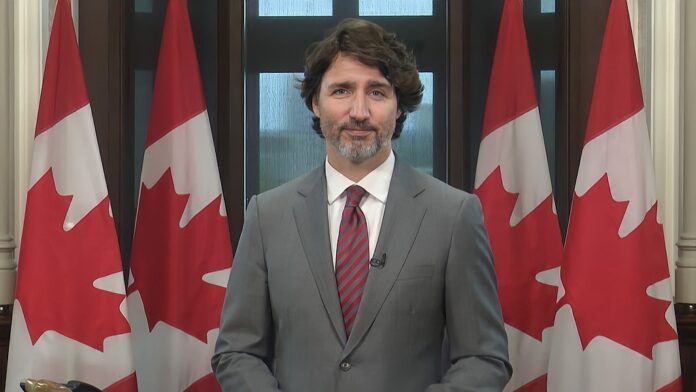Canadian Prime Minister Justin Trudeau unveils plans to cut temporary foreign worker numbers and reviews permanent resident admissions due to rising unemployment among immigrants and youth
Prime Minister Justin Trudeau unveiled significant changes to Canada’s immigration and labour policies on Monday, announcing a reduction in the number of temporary foreign workers (TFWs) permitted in the country. This move comes in response to rising unemployment rates among immigrants and young people, and a growing sense that recent policies may have overstretched the labor market.
At a press conference during the Federal ministers cabinet retreat in Halifax, Trudeau explained that the government would implement new measures targeting the TFW program. This decision follows a surge in TFWs, particularly in low-wage sectors, which some experts argue has exacerbated unemployment issues among both newcomers and young Canadians.
Embed from Getty ImagesThe federal government’s recent policy changes will limit employers in high-unemployment areas—defined as regions with an unemployment rate of six percent or more—from hiring low-wage TFWs. Exceptions will be made for sectors crucial to food security, such as agriculture and food processing, as well as construction and healthcare, where staffing shortages persist. Additionally, the new regulations will cap the proportion of a company’s workforce that can be composed of TFWs to 10 percent and shorten the maximum contract length for low-wage TFWs from two years to one.
Trudeau emphasized the need for Canadian businesses to focus on investing in training and technology rather than relying heavily on low-cost foreign labor. He highlighted that such practices are not only unfair to Canadian job seekers but also to the temporary workers themselves, who may face exploitation and mistreatment.
The government’s decision follows a rise in immigrant unemployment, which now stands at 11.6 percent, significantly higher than the national average of 6.4 percent. Youth unemployment is even more severe, reaching 13.5 percent, the highest rate in a decade. The number of low-wage TFWs has surged from 15,817 in 2016 to 83,654 in 2023.
Employment Minister Randy Boissonnault stated that the new restrictions would reduce the number of low-wage TFWs by approximately 65,000, reverting numbers to pre-pandemic levels. Housing Minister Sean Fraser noted that these changes could alleviate some pressure on the housing market, particularly in lower-end segments where competition is intense.
Opposition figures have criticized the move as a rollback of previous policies. Conservative MP Melissa Lantsman argued that the reduction in TFWs signals a failure of past immigration policies and places additional pressure on housing. Mike Moffatt, a policy expert, described the reduction as a positive step but suggested further adjustments are needed, including modifications to the high-wage component of the TFW program.
Migrant rights advocates, such as Syed Hussan of the Migrant Workers Alliance for Change, criticized the government’s decision as a misguided attempt to address broader economic issues. Hussan argued that problems like high unemployment and housing affordability stem from employer exploitation and policy failures rather than the presence of foreign workers.
Looking ahead, Trudeau indicated that the government is also reviewing the number of permanent residents Canada admits each year. The current immigration plan anticipates admitting about 485,000 permanent residents in 2024, with increases in subsequent years. Trudeau stressed that any adjustments would aim to balance the needs of Canadians with effective integration pathways for newcomers.
Immigration Minister Marc Miller assured that all options would be considered in adjusting immigration levels, reflecting the government’s commitment to adapting policies based on economic and social needs. Phil Triadafilopoulos, an immigration expert, suggested that while reducing permanent resident numbers might ease housing market pressures slightly, more significant impacts could come from altering non-permanent resident policies.
Analysis
Political: Trudeau’s announcement reflects ongoing tensions within Canadian politics regarding immigration and labor policies. The decision to cut temporary foreign workers has sparked debate among political figures and the public, highlighting a rift between the need to address unemployment issues and maintaining an open immigration policy. Critics from opposition parties and within the Liberal coalition are scrutinizing the effectiveness of past policies and pushing for more substantial reforms.
Social: The reduction in TFWs and potential changes to permanent resident admissions are likely to have significant social implications. The high unemployment rates among immigrants and youth underscore a disconnect between labour market needs and immigration policies. The government’s new approach aims to address these issues by reducing reliance on temporary foreign labour and focusing on job training for Canadians, but it also raises questions about the integration and support of newcomers already in Canada.
Racial: The debate over TFWs intersects with racial and ethnic considerations, particularly regarding how immigrants are treated in the labor market. Critics argue that the policies may disproportionately affect certain racial and ethnic groups, exacerbating issues of discrimination and inequality. The government’s move to restrict TFWs may inadvertently reinforce negative stereotypes and impact communities that rely heavily on foreign labour.
Gender: The impact of these policy changes on gender dynamics is notable, especially in sectors like food services and healthcare, where many low-wage TFWs are employed. Women, who are often overrepresented in these roles, might face increased job competition and reduced job security as a result of the policy shift. The government’s approach will need to consider these gender-specific impacts to ensure fair and equitable treatment for all workers.
Economic: Economically, the reduction in TFWs and potential adjustments to permanent resident numbers reflect a broader strategy to balance labour market needs with housing and social integration concerns. By curbing the number of low-wage foreign workers, the government aims to reduce competition for low-end housing and address unemployment rates among Canadians. However, these changes could also impact sectors heavily reliant on temporary foreign labour, potentially leading to labour shortages and increased costs for businesses.
